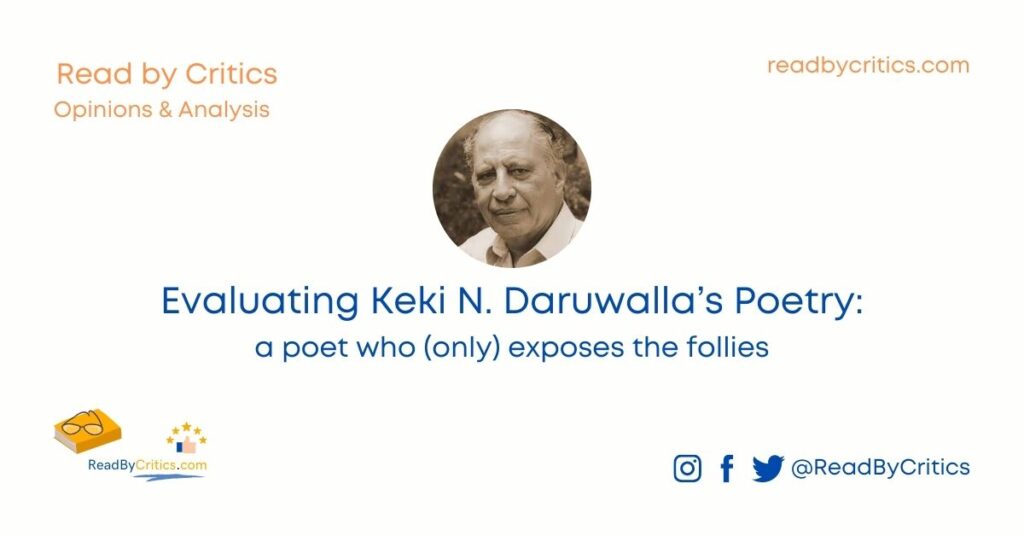Ask any English literature student about the most-debated and perplexing poem he or she may have read. I am sure 90 out of 100 will point to Eliot’s landmark composition The Waste Land. Without a doubt, this poem stands as a significant milestone in the realm of modernist poetry, hailed as a profound work of the 20th century. And it continues to be read, studied, and debated… even more than before. Published in 1922, this 434-line poem, presented in a seemingly disjointed structure akin to James Joyce’s Ulysses, captivates readers through its intricate web of voices and images, interspersed with fragments from various foreign languages. An exhibition of T S Eliot’s unfathomable knowledge and poetic craft, this poem is divided into five sections and delves into the spiritual and emotional desolation that plagued post-war Europe. Eliot skillfully weaves allusions to classical mythology, ancient Hindu texts, Christian theology, and popular culture, inviting interpretations as a contemplation on love, loss, and redemption. Even today, with its innovative use of language, a wide range of enigmatic symbolism, and profound insights into the human condition, The Waste Land continues to garner critical acclaim. And more so, its enduring impact is evidenced by translations into numerous languages and adaptations across various artistic mediums. Believe me when I say this – seldom a poem has received this gala and red carpet (let me borrow the movie-award ceremonies lexicon)! A barren wasteland of societal disarray, The Waste Land remains a powerful testament to the complexities of existence in times of turmoil, making it an indelible and revered gem in the realm of poetry. And perhaps the worst part for many, understanding this poem is not that easy! Engaging with this opus requires meticulous analysis and scrutiny, ensuring its relevance and resonance for generations as readers will have to go through pains to discover the possible meanings of this fragmented whole!
Well, there have been thousands of articles and research already on the imagery used in Eliot’s The Waste Land. However, any article cannot be complete (on this poem) unless we discuss the images. And I can begin by saying that water and fire intertwine as evocative images in T S Eliot’s The Waste Land, encapsulating the essence of a desolate realm. Water, traditionally a symbol of life and rejuvenation for centuries, is marred by absence or contamination and pollution, reflecting the poem’s barren landscape. In contrast, fire, typically associated with passion and renewal, becomes a harbinger of destruction, embodying the ravages of war and violence that permeate the text. Nevertheless, because Eliot has openly admitted using imagery and allusions from ancient Hindu texts such as Upanishads, we cannot be sure and certain about the usage of water and fire as symbolising what popular beliefs convey. In Hinduism, fire does beacon destruction. However, it also represents regeneration and new creation. It also symbolises purity and holiness! However, in the case of Eliot’s The Waste Land, the imagery extends beyond physical objects, encompassing sounds and music that contribute to the poem’s cacophonous chaos. Through this vivid imagery, The Waste Land constructs a haunting collage of a fractured modern world, where decay, desolation, and violence engender a sense of despondency. Yet, amid the gloom, glimmers of hope emerge through symbolic representations like the hyacinth girl and children’s song, hinting at the potential for rebirth amidst the wasteland. The imagery in The Waste Land wields profound power, ensnaring readers with its disquieting beauty and unsettling allure, ensuring its enduring resonance in contemporary literary discourse.
To know more about the poet, click here to read a detailed article: T S Eliot
Perhaps this is the only poem in the entire history of English literature that will find significance in any age… Eliot’s craft, themes, and symbols are timeless. The Waste Land’s timelessness lies in its multifaceted exploration of the human condition in the aftermath of the First World War. Though it was a response to the hue and cries of the First World War, wars are always looming over us! Through fragmented voices, elusive symbolism, and intertextual references, Eliot crafts a portrayal of a fractured society grappling with the loss of tradition, faith, and meaning. The poet divided his masterpiece into five sections. Each delves into a different aspect of the wasteland, symbolizing the post-war world’s barrenness which instead became a permanent feature of the modern era. The major literary devices that Eliot employs in this poem to create an immersive effect on readers are fragmentation, ambiguous symbolism, and intertextuality to evoke a sense of dislocation and complexity. And about the theme of the poem, it is vivid, varied, wavering, and yet permanent in its position in the world. A timeless theme is at the centre of the poem because it is what we see and observe in the external world and inside us. The poem’s themes encompass not only the wasteland outside but also love, loss, and the search for meaning in an indifferent world, an existential and philosophical conflict that one has to wage against oneself. The Waste Land’s power lies in its searing indictment of disillusionment, spiritual desolation, and societal decay, compelling readers to confront the stark realities of existence, and it was not limited only to the early 20th century post World War world… it is continuing the same way!
The Waste Land explores alienation, disillusion, indifference, a lost zeal for life, and disenchantment from anything that’s positive. If you are into such readership and enjoy reading such poetry, you will also enjoy reading Eliot’s poems like The Hollow Men, The Love Song of J Alfred Prufrock, poems by W B Yeats like The Second Coming, Easter 1916, and poems by Sylvia Plath… Well, these poems are certainly not enjoyable and pleasant. However, these poems do offer us an opportunity to look into our hearts and locate us in this vast world… and the unending universe! Eliot’s inspiration for this poem may come for from different sections of literature, for the resolution, nevertheless, he had to turn to the ancient Hindu texts written in Sanskrit, the Upanishads and the Vedic philosophy. From the chants of Da, Datta, and Dayadbham to the sermons and allusions – there are glimpses of the most ancient order of spiritual and religious refuge that might save one from disenchantment and sojourns of sorrows. Want to know more about the basics of Hindu philosophy? Here is something that will help you – Basic books on Hindu literature.
To conclude this article, we cannot be sure how long anything is to stay. However, The Waste Land, a century and a year old now, has been there at the top of the list of the most discussed and debated works of literature of all time, in any language. T S Eliot’s masterpiece will keep instigating and inspiring literary discourses for quite a long time from now, this is certain. It is not immortal. However, the life span of this timeless creation is certainly long enough to see after many generations of the human race on the earth because we cannot get out of the vicious cycle of temptations that lure us into the clutches of war… If you can, read this poem and try to ponder on our present conditions! I am sure you can find the resemblances that might horrify you. All the best!
By Ashish for ReadByCritics




